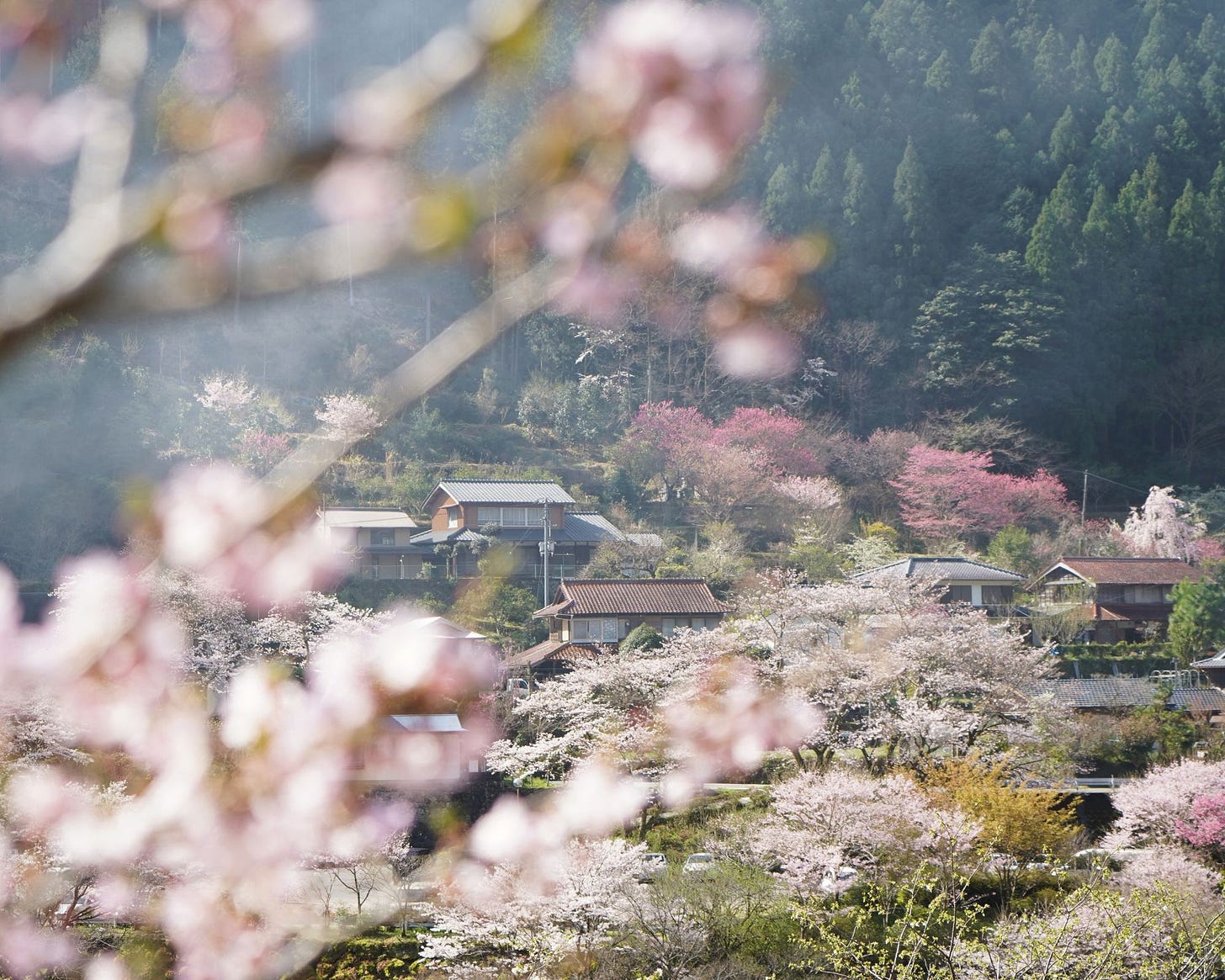Hello dear readers!
A warm, spring greeting from Kamikatsu—where the cherry blossoms sakura are now in full bloom!
This week’s update will be short. Mostly photos to share of what Kamikatsu looks like now! I’m writing a longer post about repair and maintenance—themes that have emerged time and time again since I moved to Kamikatsu.
As a village, we’re further away from the convenience of buying anything and everything, and this lack of access is often seen as a drawback when I tell people I live in the countryside. But on the contrary, this lack of convenience is a blessing in disguise. The inconveniences allow me a long pause to reflect and reconsider what we’re robbed of when convenience becomes too central to our daily lives.
It's impossible to know when the sakura will bloom, even though many forecasts make predictions. On my morning walks I pause and look at the tips of branches to see how the buds are emerging. The transition from winter to spring has made me more attentive to nature. Observing the slowly budding flowers is like watching bread rise in the oven or a teapot boil water. The changes feel gradual at first, but suddenly the bread expands, the water boils, and the sakura fills the landscape.
My partner has been making predictions this past week saying ‘tomorrow the sakura will come!’ We’re like kids waiting for Christmas, except we’re not sure when Santa’s coming. He must have made his ‘it’s going to be tomorrow’ predictions 5 days in a row—only to be surprised when they finally did bloom. The way the sakura emerges in sync makes me wonder what the trees and branches feel in the air. I imagine them saying in chorus, ‘We have enough sunlight, enough rain, and now we will bloom.’
While there is so much written about the importance of cherry blossoms to the Japanese people, at the core the symbolism is about renewal and the fleeting moments of beauty. What I take away from observing them is the sense that anything that makes us pay attention to nature is a good thing.
As millions of people find themselves outside, searching for beauty in nature, I hope this experience helps us develop a deeper appreciation for the natural world or rekindle a connection we might have disconnected with. As we look up at the wider landscape, we should also take the time to examine the intricate details of a flower's petals. Beautiful things have the power to move us emotionally, and I believe that this connection is essential if we hope to change our relationship with nature.
Thank you to my partner who’s shared all these photos with me. He’s already sleeping now and preparing for a 5:00 am wake-up to continue taking photos of the village.
I end this week’s post with this short quote from ‘On Slow Movement’, where Yung Pueblo shares how society is based on speed and productivity, and moving slowly can be a radical act.
Slow movements are intentional, powerful, and intelligently considered. To boldly move at our own pace and remove ourselves from any self-imposed competition can be a profound paradigm shift. — Yung Pueblo
May your week be filled with moments of slowness and stillness, where you can fully appreciate the subtle changes in nature.
(PS. let me know if you want to see more photos of sakura!)
With love,
Kana











The photos are lovely and I would enjoy seeing more. You are right about how we can get so used to convenience. We then take advantage of it without even knowing it. Our world is so full of beauty which is a blessing. We just need to stop and look around. Great post Kana.
Thank you for reminding me to go out and enjoy the blooming flowers of spring, to treasure the impermanence of beauty and life. We have our version of Sakura here too in Europe!